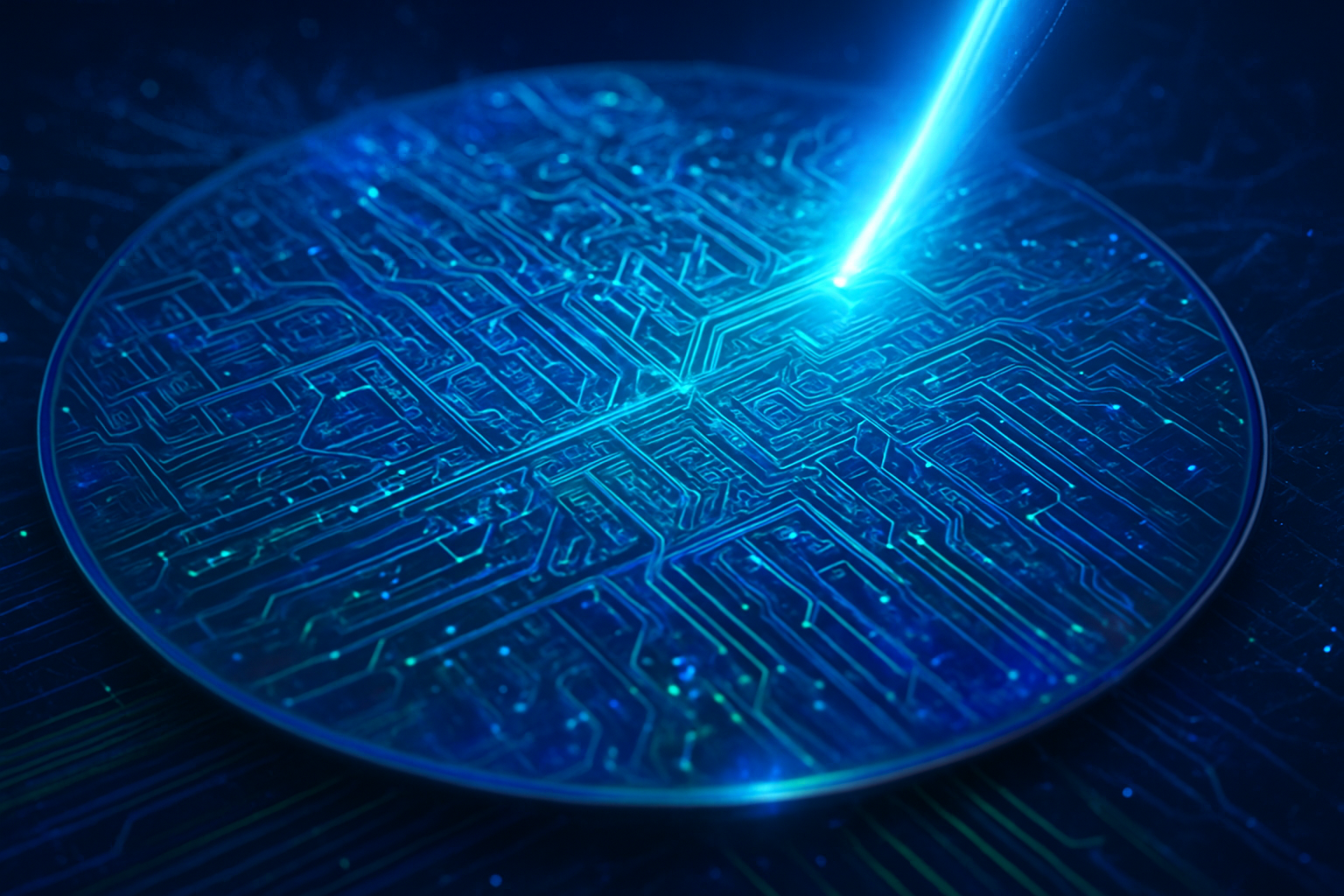In a relentless pursuit of computational supremacy, the semiconductor industry is undergoing a transformative period, driven by the insatiable demands of artificial intelligence. Breakthroughs in manufacturing processes and materials are not merely incremental improvements but foundational shifts, enabling chips that are exponentially faster, more efficient, and more powerful. From the intricate architectures of Gate-All-Around (GAA) transistors to the microscopic precision of High-Numerical Aperture (High-NA) EUV lithography and the ingenious integration of advanced packaging, these innovations are reshaping the very fabric of digital intelligence.
These advancements, unfolding rapidly towards December 2025, are critical for sustaining the exponential growth of AI, particularly in the realm of large language models (LLMs) and complex neural networks. They promise to unlock unprecedented capabilities, allowing AI to tackle problems previously deemed intractable, while simultaneously addressing the burgeoning energy consumption concerns of a data-hungry world. The immediate significance lies in the ability to pack more intelligence into smaller, cooler packages, making AI ubiquitous from hyperscale data centers to the smallest edge devices.
The Microscopic Marvels: A Deep Dive into Semiconductor Innovation
The current wave of semiconductor innovation is characterized by several key technical advancements that are pushing the boundaries of physics and engineering. These include a new transistor architecture, a leap in lithography precision, and revolutionary chip integration methods.
Gate-All-Around (GAA) Transistors (GAAFETs) represent the next frontier in transistor design, succeeding the long-dominant FinFETs. Unlike FinFETs, where the gate wraps around three sides of a vertical silicon fin, GAAFETs employ stacked horizontal "nanosheets" where the gate completely encircles the channel on all four sides. This provides superior electrostatic control over the current flow, drastically reducing leakage current (power wasted when the transistor is off) and improving drive current (power delivered when on). This enhanced control allows for greater transistor density, higher performance, and significantly reduced power consumption, crucial for power-intensive AI workloads. Manufacturers can also vary the width and number of these nanosheets, offering unprecedented design flexibility to optimize for specific performance or power targets. Samsung (KRX: 005930) was an early adopter, integrating GAA into its 3nm process in 2022, with Intel (NASDAQ: INTC) planning its "RibbonFET" GAA for its 20A node (equivalent to 2nm) in 2024-2025, and TSMC (NYSE: TSM) targeting GAA for its N2 process in 2025-2026. The industry universally views GAAFETs as indispensable for scaling beyond 3nm.
High-Numerical Aperture (High-NA) EUV Lithography is another monumental step forward in patterning technology. Extreme Ultraviolet (EUV) lithography, operating at a 13.5-nanometer wavelength, is already essential for current advanced nodes. High-NA EUV elevates this by increasing the numerical aperture from 0.33 to 0.55. This enhancement significantly boosts resolution, allowing for the patterning of features with pitches as small as 8nm in a single exposure, compared to approximately 13nm for standard EUV. This capability is vital for producing chips at sub-2nm nodes (like Intel's 18A), where standard EUV would necessitate complex and costly multi-patterning techniques. High-NA EUV simplifies manufacturing, reduces cycle times, and improves yield. ASML (AMS: ASML), the sole manufacturer of these highly complex machines, delivered the first High-NA EUV system to Intel in late 2023, with volume manufacturing expected around 2026-2027. Experts agree that High-NA EUV is critical for sustaining the pace of miniaturization and meeting the ever-growing computational demands of AI.
Advanced Packaging Technologies, including 2.5D, 3D integration, and hybrid bonding, are fundamentally altering how chips are assembled, moving beyond the limitations of monolithic die design. 2.5D integration places multiple active dies (e.g., CPU, GPU, High Bandwidth Memory – HBM) side-by-side on a silicon interposer, which provides high-density, high-speed connections. TSMC's CoWoS (Chip-on-Wafer-on-Substrate) and Intel's EMIB (Embedded Multi-die Interconnect Bridge) are prime examples, enabling incredible bandwidths for AI accelerators. 3D integration involves vertically stacking active dies and interconnecting them with Through-Silicon Vias (TSVs), creating extremely short, power-efficient communication paths. HBM memory stacks are a prominent application. The cutting-edge Hybrid Bonding technique directly connects copper pads on two wafers or dies at ultra-fine pitches (below 10 micrometers, potentially 1-2 micrometers), eliminating solder bumps for even denser, higher-performance interconnects. These methods enable chiplet architectures, allowing designers to combine specialized components (e.g., compute cores, AI accelerators, memory controllers) fabricated on different process nodes into a single, cohesive system. This approach improves yield, allows for greater customization, and bypasses the physical limits of monolithic die sizes. The AI research community views advanced packaging as the "new Moore's Law," crucial for addressing memory bandwidth bottlenecks and achieving the compute density required by modern AI.
Reshaping the Corporate Battleground: Impact on Tech Giants and Startups
These semiconductor innovations are creating a new competitive dynamic, offering strategic advantages to some and posing challenges for others across the AI and tech landscape.
Semiconductor manufacturing giants like TSMC (NYSE: TSM) and Intel (NASDAQ: INTC) are at the forefront of these advancements. TSMC, as the leading pure-play foundry, is critical for most fabless AI chip companies, leveraging its CoWoS advanced packaging and rapidly adopting GAAFETs and High-NA EUV. Its ability to deliver cutting-edge process nodes and packaging provides a strategic advantage to its diverse customer base, including NVIDIA (NASDAQ: NVDA) and Apple (NASDAQ: AAPL). Intel, through its revitalized foundry services and aggressive adoption of RibbonFET (GAA) and High-NA EUV, aims to regain market share, positioning itself to produce AI fabric chips for major cloud providers like Amazon Web Services (AWS). Samsung (KRX: 005930) also remains a key player, having already implemented GAAFETs in its 3nm process.
For AI chip designers, the implications are profound. NVIDIA (NASDAQ: NVDA), the dominant force in AI GPUs, benefits immensely from these foundry advancements, which enable denser, more powerful GPUs (like its Hopper and upcoming Blackwell series) that heavily utilize advanced packaging for high-bandwidth memory. Its strategic advantage is further cemented by its CUDA software ecosystem. AMD (NASDAQ: AMD) is a strong challenger, leveraging chiplet technology extensively in its EPYC processors and Instinct MI series AI accelerators. AMD's modular approach, combined with strategic partnerships, positions it to compete effectively on performance and cost.
Tech giants like Google (NASDAQ: GOOGL), Microsoft (NASDAQ: MSFT), and Amazon (NASDAQ: AMZN) are increasingly pursuing vertical integration by designing their own custom AI silicon (e.g., Google's TPUs, Microsoft's Azure Maia, Amazon's Inferentia/Trainium). These companies benefit from advanced process nodes and packaging from foundries, allowing them to optimize hardware-software co-design for their specific cloud AI workloads. This strategy aims to enhance performance, improve power efficiency, and reduce reliance on external suppliers. The shift towards chiplets and advanced packaging is particularly attractive to these hyperscale providers, offering flexibility and cost advantages for custom ASIC development.
For AI startups, the landscape presents both opportunities and challenges. Chiplet technology could lower entry barriers, allowing startups to innovate by combining existing, specialized chiplets rather than designing complex monolithic chips from scratch. Access to AI-driven design tools can also accelerate their development cycles. However, the exorbitant cost of accessing leading-edge semiconductor manufacturing (GAAFETs, High-NA EUV) remains a significant hurdle. Startups focusing on niche AI hardware (e.g., neuromorphic computing with 2D materials) or specialized AI software optimized for new hardware architectures could find strategic advantages.
A New Era of Intelligence: Wider Significance and Broader Trends
The innovations in semiconductor manufacturing are not just technical feats; they are fundamental enablers reshaping the broader AI landscape and driving global technological trends.
These advancements provide the essential hardware engine for the accelerating AI revolution. Enhanced computational power from GAAFETs and High-NA EUV allows for the integration of more processing units (GPUs, TPUs, NPUs), enabling the training and execution of increasingly complex AI models at unprecedented speeds. This is crucial for the ongoing development of large language models, generative AI, and advanced neural networks. The improved energy efficiency stemming from GAAFETs, 2D materials, and optimized interconnects makes AI more sustainable and deployable in a wider array of environments, from power-constrained edge devices to hyperscale data centers grappling with massive energy demands. Furthermore, increased memory bandwidth and lower latency facilitated by advanced packaging directly address the data-intensive nature of AI, ensuring faster access to large datasets and accelerating training and inference times. This leads to greater specialization, as the ability to customize chip architectures through advanced manufacturing and packaging, often guided by AI in design, results in highly specialized AI accelerators tailored for specific workloads (e.g., computer vision, NLP).
However, this progress comes with potential concerns. The exorbitant costs of developing and deploying advanced manufacturing equipment, such as High-NA EUV machines (costing hundreds of millions of dollars each), contribute to higher production costs for advanced chips. The manufacturing complexity at sub-nanometer scales escalates exponentially, increasing potential failure points. Heat dissipation from high-power AI chips demands advanced cooling solutions. Supply chain vulnerabilities, exacerbated by geopolitical tensions and reliance on a few key players (e.g., TSMC's dominance in Taiwan), pose significant risks. Moreover, the environmental impact of resource-intensive chip production and the vast energy consumption of large-scale AI models are growing concerns.
Compared to previous AI milestones, the current era is characterized by a hardware-driven AI evolution. While early AI adapted to general-purpose hardware and the mid-2000s saw the GPU revolution for parallel processing, today, AI's needs are actively shaping computer architecture development. We are moving beyond general-purpose hardware to highly specialized AI accelerators and architectures like GAAFETs and advanced packaging. This period marks a "Hyper-Moore's Law" where generative AI's performance is doubling approximately every six months, far outpacing previous technological cycles.
These innovations are deeply embedded within and critically influence the broader technological ecosystem. They foster a symbiotic relationship with AI, where AI drives the demand for advanced processors, and in turn, semiconductor advancements enable breakthroughs in AI capabilities. This feedback loop is foundational for a wide array of emerging technologies beyond core AI, including 5G, autonomous vehicles, high-performance computing (HPC), the Internet of Things (IoT), robotics, and personalized medicine. The semiconductor industry, fueled by AI's demands, is projected to grow significantly, potentially reaching $1 trillion by 2030, reshaping industries and economies worldwide.
The Horizon of Innovation: Future Developments and Expert Predictions
The trajectory of semiconductor manufacturing promises even more radical transformations, with near-term refinements paving the way for long-term, paradigm-shifting advancements. These developments will further entrench AI's role across all facets of technology.
In the near term, the focus will remain on perfecting current cutting-edge technologies. This includes the widespread adoption and refinement of 2.5D and 3D integration, with hybrid bonding maturing to enable ultra-dense, low-latency connections for next-generation AI accelerators. Expect to see sub-2nm process nodes (e.g., TSMC's A14, Intel's 14A) entering production, pushing transistor density even further. The integration of AI into Electronic Design Automation (EDA) tools will become standard, automating complex chip design workflows, generating optimal layouts, and significantly shortening R&D cycles from months to weeks.
The long term envisions a future shaped by more disruptive technologies. Fully autonomous fabs, driven by AI and automation, will optimize every stage of manufacturing, from predictive maintenance to real-time process control, leading to unprecedented efficiency and yield. The exploration of novel materials will move beyond silicon, with 2D materials like graphene and molybdenum disulfide being actively researched for ultra-thin, energy-efficient transistors and novel memory architectures. Wide-bandbandgap semiconductors (GaN, SiC) will become prevalent in power electronics for AI data centers and electric vehicles, drastically improving energy efficiency. Experts predict the emergence of new computing paradigms, such as neuromorphic computing, which mimics the human brain for incredibly energy-efficient processing, and the development of quantum computing chips, potentially enabled by advanced fabrication techniques.
These future developments will unlock a new generation of AI applications. We can expect increasingly sophisticated and accessible generative AI models, enabling personalized education, advanced medical diagnostics, and automated software development. AI agents are predicted to move from experimentation to widespread production, automating complex tasks across industries. The demand for AI-optimized semiconductors will skyrocket, powering AI PCs, fully autonomous vehicles, advanced 5G/6G infrastructure, and a vast array of intelligent IoT devices.
However, significant challenges persist. The technical complexity of manufacturing at atomic scales, managing heat dissipation from increasingly powerful AI chips, and overcoming memory bandwidth bottlenecks will require continuous innovation. The rising costs of state-of-the-art fabs and advanced lithography tools pose a barrier, potentially leading to further consolidation in the industry. Data scarcity and quality for AI models in manufacturing remain an issue, as proprietary data is often guarded. Furthermore, the global supply chain vulnerabilities for rare materials and the energy consumption of both chip production and AI workloads demand sustainable solutions. A critical skilled workforce shortage in both AI and semiconductor expertise also needs addressing.
Experts predict the semiconductor industry will continue its robust growth, reaching $1 trillion by 2030 and potentially $2 trillion by 2040, with advanced packaging for AI data center chips doubling by 2030. They foresee a relentless technological evolution, including custom HBM solutions, sub-2nm process nodes, and the transition from 2.5D to 3.5D packaging. The integration of AI across the semiconductor value chain will lead to a more resilient and efficient ecosystem, where AI is not only a consumer of advanced semiconductors but also a crucial tool in their creation.
The Dawn of a New AI Era: A Comprehensive Wrap-up
The semiconductor industry stands at a pivotal juncture, where innovation in manufacturing processes and materials is not merely keeping pace with AI's demands but actively accelerating its evolution. The advent of GAAFETs, High-NA EUV lithography, and advanced packaging techniques represents a profound shift, moving beyond traditional transistor scaling to embrace architectural ingenuity and heterogeneous integration. These breakthroughs are delivering chips with unprecedented performance, power efficiency, and density, directly fueling the exponential growth of AI capabilities, from hyper-scale data centers to the intelligent edge.
This era marks a significant milestone in AI history, distinguishing itself by a symbiotic relationship where AI's computational needs are actively driving fundamental hardware infrastructure development. We are witnessing a "Hyper-Moore's Law" in action, where advances in silicon are enabling AI models to double in performance every six months, far outpacing previous technological cycles. The shift towards chiplet architectures and advanced packaging is particularly transformative, offering modularity, customization, and improved yield, which will democratize access to cutting-edge AI hardware and foster innovation across the board.
The long-term impact of these developments is nothing short of revolutionary. They promise to make AI ubiquitous, embedding intelligence into every device and system, from autonomous vehicles and smart cities to personalized medicine and scientific discovery. The challenges, though significant—including exorbitant costs, manufacturing complexity, supply chain vulnerabilities, and environmental concerns—are being met with continuous innovation and strategic investments. The integration of AI within the manufacturing process itself creates a powerful feedback loop, ensuring that the very tools that build AI are optimized by AI.
In the coming weeks and months, watch for major announcements from leading foundries like TSMC (NYSE: TSM), Intel (NASDAQ: INTC), and Samsung (KRX: 005930) regarding their progress on 2nm and sub-2nm process nodes and the deployment of High-NA EUV. Keep an eye on AI chip designers like NVIDIA (NASDAQ: NVDA) and AMD (NASDAQ: AMD), as well as hyperscale cloud providers like Google (NASDAQ: GOOGL), Microsoft (NASDAQ: MSFT), and Amazon (NASDAQ: AMZN), as they unveil new AI accelerators leveraging these advanced manufacturing and packaging technologies. The race for AI supremacy will continue to be heavily influenced by advancements at the atomic edge of semiconductor innovation.
This content is intended for informational purposes only and represents analysis of current AI developments.
TokenRing AI delivers enterprise-grade solutions for multi-agent AI workflow orchestration, AI-powered development tools, and seamless remote collaboration platforms.
For more information, visit https://www.tokenring.ai/.









